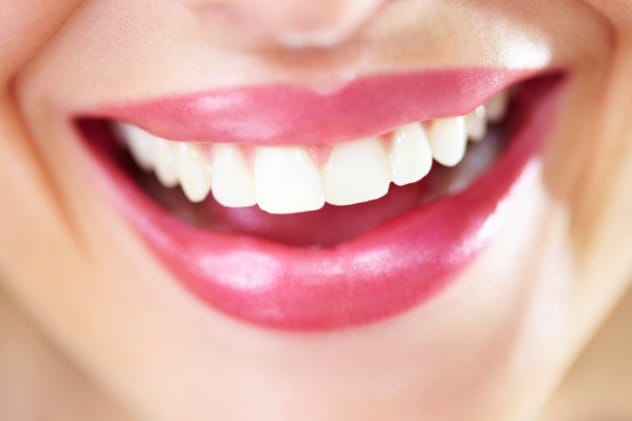The quest for happiness is a universal one. Especially when life throws curveballs or the daily grind gets tough, finding joy can seem like a challenge. But what if science could offer a roadmap? This year, let’s explore ten proven methods, backed by research, that can help us all become happier and less stressed. These aren’t just quick fixes; they’re sustainable habits for a more joyful life.
10 Give Happiness a Genuine Try

It might sound overly simple, but actively trying to be happier can make a real difference. When you’re feeling down, well-meaning advice to “just get over it” often falls flat. It’s important to acknowledge your feelings, whether it’s sadness from a loss or the weight of clinical depression. Minimizing someone’s emotions doesn’t help.
However, research from Knox College and the University of Missouri suggests that making a conscious effort to boost your mood can genuinely improve your sense of well-being. In one study, participants who were told to try and feel happy while listening to uplifting music reported feeling significantly more positive than those who just listened passively. A follow-up study over two weeks confirmed these findings: those who focused on improving their mood while listening to happy music reported the highest levels of positivity. So, concentrating on happiness can indeed lead to happier results.
9 Unplug from Your Devices

In our hyper-connected world, we spend more time than ever glued to our gadgets. Researchers from the University of Gothenburg in Sweden found that constant engagement with electronic devices is linked to increased stress, depression, and sleep problems. It’s not just screen time itself; the pressure of being constantly available—feeling obligated to reply to texts and emails immediately—adds to the stress.
This isn’t just an adult problem. Children who spend too much time on screens (four or more hours) are also at higher risk for anxiety and depression. Even two hours can start to show negative effects. The solution? Make a deliberate effort to switch off every day. Take short breaks to stretch, or designate screen-free times, like during meals. Stepping away from social media and constant notifications can lead to better sleep, improved productivity, and higher self-esteem.
8 Step Outside and Embrace Nature

We’re often warned about the dangers of too much sun exposure, from sunburns to skin cancer. This caution, combined with our tech-heavy lifestyles, has led many of us to spend most of our time indoors. While it’s wise to be careful during peak UV radiation, avoiding sunlight altogether isn’t the answer.
The World Health Organization suggests that more health issues might arise from insufficient sunlight than from too much. Our skin produces vitamin D when exposed to UVB rays, and this vitamin is crucial for both mental and physical health. A deficiency is linked to numerous problems, and supplements don’t fully replace natural sunlight. Just 10–15 minutes of direct sunlight (without sunglasses) can be beneficial. Furthermore, sunlight exposure helps release nitric oxide into the bloodstream, which can lower blood pressure and reduce heart disease risk. Simply being in nature also improves moods and cuts down on stress.
7 Practice Regular Meditation

Meditation requires focus, but its benefits are vast. Though ancient, it’s gaining traction in a big way. Early studies showed its potential for physical issues like migraines. Soon, another positive outcome emerged: focused meditation significantly reduced negative emotions. We all have an emotional “set point,” and meditation can alter this baseline for the better, with changes noticeable after just two months. It also fosters kindness and boosts immune responses.
While not an instant fix, meditation is a powerful long-term strategy for happiness. It doesn’t just make happiness easier to achieve; it can actually change your genetic expression. Studies comparing experienced meditators with a control group found molecular-level changes in the meditators, including a reduction in inflammatory gene expression. Meditation can make you happier, healthier, and even impact your genes.
6 Spend Money, but on Others

The old saying “’tis better to give than to receive” holds a scientific truth. If you embrace generosity year-round, you’re likely to be happier. Researchers from the University of British Columbia and Harvard University discovered that money *can* buy happiness, but primarily when you spend it on other people. While income does play a role in happiness up to a certain point (around $50,000-$75,000 annually), how you spend it matters more.
It’s not solely about large sums of money. Daily acts of kindness and altruism also promote happiness and overall life satisfaction. A study in The Journal of Social Psychology found that people who performed daily acts of altruism or tried new things for 10 days reported higher happiness levels than those who didn’t. This suggests that both giving and new experiences can significantly boost our life satisfaction.
5 Smile, and Mean It (Mostly)

Before you dismiss this as faking it, hear out the science. Smiling isn’t just a result of feeling happy; it can also *cause* happiness. This is known as the “facial feedback hypothesis.” Our physical expressions can influence our emotional state. It’s often easier to control our facial muscles than our complex thoughts.
A study at the University of Cardiff in Wales looked at people who had Botox injections, making it difficult for them to frown. These individuals reported higher levels of joy compared to those who could frown easily, irrespective of their actual self-confidence. This highlights the mind-body connection in happiness. Your facial muscles send feedback to your brain. A smile signals happiness, prompting your brain to release feel-good chemicals. A big, genuine smile engages the orbicularis oculi muscles around your eyes, further convincing your brain you’re truly happy. While it’s important to express negative emotions too, cracking a smile can genuinely lift your spirits when you’re feeling low.
4 Find Your “Flow”

You know that feeling when you’re so absorbed in an activity that time seems to disappear? Scientists call this “flow.” It happens when we’re completely immersed in something we’re good at, yet still find challenging. Unlike passive happiness from external sources, flow is an active experience you create.
The activities that induce flow vary from person to person—an athlete might find it during a race, an artist while painting. For an activity to create flow, it must meet three criteria: it should feel like a choice, be inherently pleasant, and be challenging enough to require skill but not so difficult that success is impossible. Interestingly, during flow, you might experience a lack of emotion. The joy often comes afterward, reflecting on the experience. This is why pursuing activities you love and finding purpose in your work (or hobbies) is so important. It’s not about avoiding work, but finding flow within it.
3 Reach Out: Real Connections Matter

While social media offers a sense of connection, it doesn’t always translate to genuine satisfaction or happiness. Researchers at the University of Michigan found that increased Facebook use among young adults correlated with lower happiness levels over time. In contrast, real-life interactions, even over the phone, made people feel much better.
This supports extensive research showing that physical touch is a powerful healer and that a lack of intimacy can be detrimental. Touch improves immune systems and reduces anxiety. From infancy, nurturing touch is a vital human need. Deprivation can affect the release of hormones like oxytocin and vasopressin, crucial for social bonding, potentially leading to lifelong issues. The benefits continue into adulthood; hugs and holding hands release oxytocin, reducing stress hormones like cortisol. Even cuddling with a pet can lessen pain, boost your immune system, and bring lasting happiness.
2 Get Moving with Exercise

Exercise is widely recognized for its mood-boosting effects. That rush of endorphins after a good workout provides an immediate lift, but what about long-term happiness? Canadian scientists found that less active people were twice as unlikely to be happy compared to those who were consistently active. Similarly, Penn State University researchers discovered that more physically active individuals reported higher levels of enjoyment.
There’s even growing evidence that exercise can be more effective than antidepressants for some. When you work up a sweat, your brain produces chemicals called endocannabinoids, similar to those in marijuana. These natural chemicals reduce pain, stress, and anxiety. So, next time you need a pick-me-up, lacing up your running shoes could be your best bet for a natural high.
1 Don’t Make “Being Happy” Your Only Goal

While trying to be happy and smiling more can improve your mood, making “being happy” your ultimate life goal can be counterproductive. Happiness is an emotion, a transient state, not a permanent destination you can definitively reach. Obsessively pursuing it can lead to disappointment.
Researchers from the University of Denver found that people who placed a very high value on happiness, especially when not stressed, were often less happy than those who didn’t prioritize it as much. This might be because they set unrealistically high standards, making it easier to feel let down. Constantly focusing on your own happiness can also lead to selfish behavior, diminishing opportunities for joyful shared moments. Instead, experts suggest setting short-term, activity-focused goals, like meditating consistently, treating a friend to lunch, or taking a daily walk outside. These smaller, achievable goals naturally bring more joy into your life.
Incorporating these scientifically-backed strategies into your routine can pave the way for a more fulfilling and joyful existence. It’s about a journey of small, consistent changes rather than a single destination.
Which of these happiness hacks do you plan to try, or which ones already work for you? Leave your comment below and share your thoughts!










